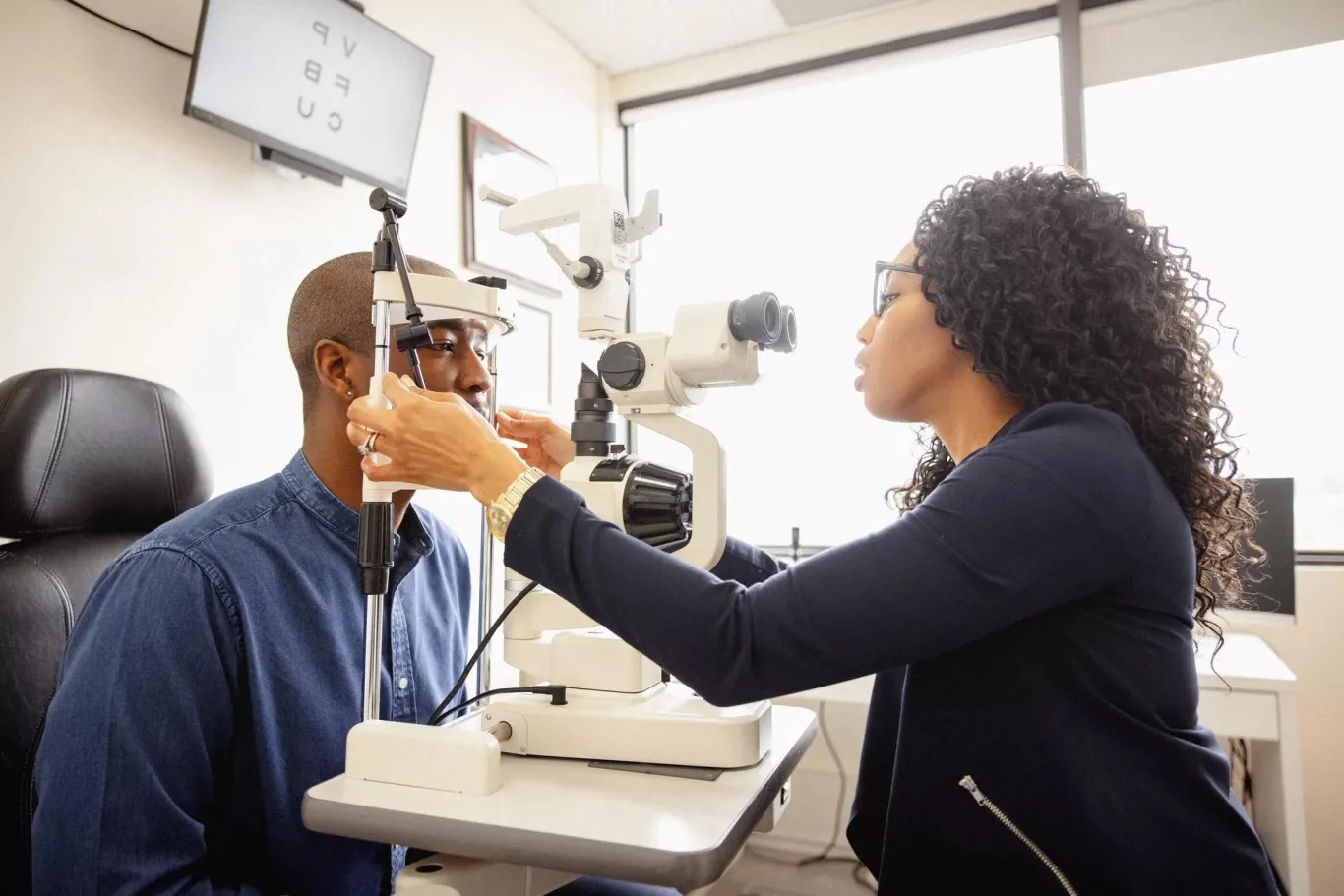
Vision insurance provides you and any covered family members access to high-quality and routine eye exams, prescription glasses, and contact lenses at a reduced cost—helping your eye doctor identify unexpected health issues, like diabetes, high cholesterol, and thyroid disorders through exams.
1. Get the benefit through your employer
If your company offers this product in its benefits program, you can enroll in vision coverage for yourself, your spouse, and your dependents to age 26. Depending on your employer’s policy, you may be responsible for a portion of the premium. This amount is often a lower group rate and comes straight out of your paycheck.
1. Purchase benefit through your employer
You can buy vision coverage for yourself, your spouse, and your dependents to age 26 at a lower cost than if you purchase it on your own. The cost of this benefit (known as the premium) is deducted from your paycheck.
2. Receive vision services at a reduced cost
Vision insurance pays all or a portion of routine exams, prescription glasses, and contact lenses that you and any covered family members receive.
3. File your claim
For in-network services, your VSP® Vision Care provider will submit your claim to VSP on your behalf. For out-of-network services, you can submit a claim online or download/mail the VSP member reimbursement form.
Find a provider
Search our network for your preferred vision specialist.
Principal provides a network (VSP® Vision Care) of 41,000+ eyecare providers and 105,000+ eyecare locations nationwide, so you can likely keep your eye doctor or find one nearby.

Sawyer deals with customer accounts at work, which means constantly viewing names and numbers on a computer screen—all day, every day. And like many of us, Sawyer also keeps in touch with friends via social media online.
It’s safe to say that Sawyer relies on her vision in all areas of life. So, since glaucoma and diabetes run in her family, Sawyer can’t afford to let a year go by without a visit to the eye doctor. That’s why access to vision insurance is important to Sawyer.
Example for illustrative purposes only.

An established, nationwide network of VSP providers, including both independent providers and retail chains.
No waiting period for coverage when purchased during your employer’s annual benefits enrollment.
On the Principal® app or at principal.com, you can view and manage your benefits, as well as view and download your ID cards from the app.
Vision insurance (offered through Principal® and VSP® Vision Care) helps you save money on:
- Routine eye exam
- Prescription glasses
- Contact lenses
Check your policy for specific information.
With VSP
- Rebates on the most popular contact lens brands.
- Up to $500 savings on laser vision surgery.
- No more than a $39 copay on routine retinal screening.
- Save up to 60% on a part of state-of-the-art digital hearing aids through TruHearing®.
Not all services are covered under vision insurance—check your policy for specific information. For example, medical procedures and non-prescription glasses are not typically covered.
Plans can vary in terms of coverage, benefits, and costs, so check your policy for specific information.
- VSP. This is full-service coverage, offering a WellVision Exam® that can help detect eye and overall health conditions, such as diabetes. Plus, it offers a wide selection of eyewear. The VSP Choice Plan is a full-service plan that offers choice, flexibility, and value through a VSP Network Provider.
- Online shopping. With Eyeconic®, you get the convenience of shopping online, plus the personal touch from a VSP network doctor. Visit eyeconic.com for more information.
- Retail chains. There are 5,500+ retail partner chain locations, plus 4,700+ independent chain locations nationwide.
- Out-of-network. Coverage includes a reimbursement schedule for any out-of-network provider.
- In-network vision services mean you see a preferred provider who’s contracted with VSP. You get more coverage and more benefits at the time of service. Your vision provider will file your claims for you.
- Out-of-network vision services mean you see a non-preferred provider who’s not contracted with VSP. Your insurance plan typically covers less, and you’ll need to submit your claim to VSP.
For the services you receive under your vision insurance, it’s important to understand the following terms that will be noted in your policy.
- A copay is a set dollar amount (usually $0 – $25) that’s required to be paid by you and any covered family members at the time of service.
- An allowance is the set amount that Principal will cover for frames or contact lenses. This amount can vary between $130 - $250 depending on the plan design.
Learn more.
Ready to unlock the full potential of your benefits? Talk to your employer or financial professional about benefit costs and how to enroll.
Explore other benefits that your employer may provide:
Explore other benefits provided through {business_name}